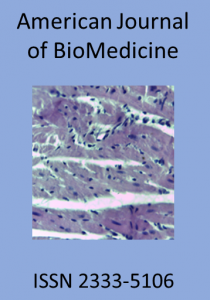Abstract
The responses of streptozotocin (STZ)-induced diabetic rats for the aqueous Chrozophora tinctoria (L.) Rafin leaves extracts were studied in this new work. To achieve this aim, Physiological, biochemical and histological parameters of (STZ) diabetic rats are evaluated. Rats are distributed into five groups: Control, diabetic rats and three diabetic groups received orally different doses of (50, 70, and 90 mg/kg body weight (BW)) from the target extract for a period of 35 days. When the therapy is ended, blood samples, liver tissues were taken and glucose, insulin, ALT, AST, ALP were determined as well as liver histology. In general, the results of this study show that the liver tissue damage serum ALP, AST ALT activities and blood glucose levels were remarkable normalized. Furthermore, it was observed that the BW of diabetic control group is decreased. However, the BW is elevated slightly in the diabetic treated groups as well as serum insulin. In addition, the extract improves the liver function and reduces lesions associated with diabetic state in STZ induced rats. Moreover, the effect of oral administration of Chrozophora tinctoria (L.) Rafin at a dose of 90 mg / kg body weight was more efficacy than the 50 and 70 mg/kg body weight. The results indicate the extract exhibit protective effect on liver tissues, and prove its potentials as an antidiabetic and hepatoprotective agent.
Keywords: Chrozophora tinctoria (L.) Rafin; Diabetes; Streptozotocin; Liver function
Copyright © 20120 by The American Society for BioMedicine and BM-Publisher, Inc.
1. Ghosh S, Surawanshi SA. Effect of vinca rosea extracts in treatment of alloxan diabetes in male albina rats. Indian J. Exp. Biol 2012;8:748-759.
2. Savage DB, Petersen KF, Shulman GI. Disordered lipid metabolism and the pathogenesis of insulin resistance. Physiol. Rev 2007; 87:507-520. https://doi.org/10.1152/physrev.00024.2006
PMid:17429039 PMCid:PMC2995548
3. Stumvoll M, Goldstin BJ, Van Haeften TW. Type 2 diabetes: principles of pathogenesis and therapy. Seminar 2005;365:1333-1346. https://doi.org/10.1016/S0140-6736(05)61032-X
4. Marcovecchio M, Mohn A, Chiarelli. Type 2 diabetes mellitus in children and adolescents. J. Endocrin. Inves 2005;28(9):853-863. https://doi.org/10.1007/BF03347581
PMid:16370570
5. World Health Organization. Diabetes Programme. Available at: <http://www.who.int/diabetes>. Accessed on: 17 Jan. 2008.
6. Seghrouchni I, Drai J, Bannier E, et al. Oxidative stress parameters in type I, type II and insulin treated type2 diabetes mellitus,insulin treatment efficiency, Clin. Chim. Acta 2002;321:89-96.
https://doi.org/10.1016/S0009-8981(02)00099-2
7. Tolman KG, Fonseca MD, Meng AV, Tan H, Dalpiaz A. Hepatobiliary disease in type 2 diabetes mellitus. Annal. Int. Med.e 2004;12(141):946- 952.
8. Sözmen EY, Sözmen B, Delen Y, Onat T. Catalasel/superoxide dismutase (SOD)and catalase/paraoxonase(PON)ratios may implicate poor glycemic control, Arch. Med. Res 2001;32(9):283-287.
9. Halliwell B, Gutteridge JM. Free Radicals in Biology and Medicine,11. Vol. 3, Oxford University Press, Oxford, UK, 4th edition, 1999.
10. Loguercio C, Federico A. Oxidative stress in viral and alcoholic 13. hepatitis, Free Rad. Bio. Med 2003;34(1):1-10.
11. Gezginci-Oktayoglu S, Basaraner H, Yanardag R, Bolkent S. The effects of combined treatment of antioxidants on the liver injury in STZ diabetic rats. Dig. Dis. Sci 2009;54(3):538-546. https://doi.org/10.1007/s10620-008-0381-0
PMid:18712602
12. Jones AF, Winkles JW, Jennings PE, et al. Serum antioxidant activity in diabetes mellitus, Diabetes Research 1983;7(2):9-92. PMid:3396268
13. Tolman KG, Fonseca V, Tan MH, Dalpiaz A. Narrative review: hepatobiliary disease in type 2 diabetes mellitus," Annal. Int. Med 2004;141(12):946-956. https://doi.org/10.7326/0003-4819-141-12-200412210-00011
14. Motshakeri M, Ebrahimi M, Goh YM, Matanjun P, Mohamed S. Sargassum polycystum reduces hyperglycaemia, dyslipidaemia and oxidative stress via increasing insulin sensitivity in a rat model of type 2 diabetes, J. Sci. Food Agr 2012;93(7):1772–1778.
https://doi.org/10.1002/jsfa.5971 PMid:23208488
15. Kumar S, Kumar DR. Evaluation of antidiabetic activity of Euphorbia hirta Linn. in streptozotocin induced induced diabetic mice, Indian J Nat Prod Resour 2010;1:200-203.
16. Rezazadeh H, Nazemieh H, Delazar A, Ali Reza NM, Mehdipour S. The inhibitory effects of Chrozophora tinctoria extract on benzoyl peroxide-promoted skin carcinogenesis. Kournal Pharma.Sci 2006;3:39-42.
17. Ugula S, Baslar SY, Dogan H. The determination of colour intensity of Rubbia tinctorum and Chrozophora tinctoria distributed in Western Anotolia.XI Anniversary Scientefic Conference Special Edition /on –line 120 Years of Academic Education, In Biology 45 Years Faculity of Biology. Biotec. Biotechnol 2009;410-413.
18. Başlar S, Mert HH. Studies on the ecology of Chrozophora tinctoria L. and Rubia tinctorum L. in Western Anatolia, Turk J. Bot 1999;23:33-44.
19. Mohamed KS. Phenylpropanoid glucosides from Chrozophora obliqua. Phytochemistry 2001;58:615- 618. https://doi.org/10.1016/S0031-9422(01)00262-X
20. Kodati DR, Burra S, Kumar GP. Evaluation of wound healing activity of methanolic root extract of Plumbago zeylanica L. in wistar albino rats, Asian J. Plant Sci. Res 2011;1(2):26–34.
21. Organisation for Economic and Cultural Development. Guidelines for Testing Chemicals, Acute Oral Toxicit up and down Procedure, 425;1-26, 2001.
22. Villano D, Ernandez-Pachon MS, Moya ML, Troncoso AM, Garcıa-Parrilla MC. Radical scavenging ability of poly phnolic compounds towards DPPH free radical, Talanta 2007;71(1):230-235.
23. Konaté K, Bassolé IHN, HilouA, et al. Toxicity assessment and analgesic activity investigation of aqueous acetone extracts of Sida acuta Burn f. and Sida cordifolia L.(Malvaceae), medicinal plants of Burkina Faso, BMC Complement Altern Med 2012;12:120. https://doi.org/10.1186/1472-6882-12-120
24. Oliveira HC, Santos M, Grigulo R, et al. Antidiabetic activity of Vatairea macrocarpa extract in rats. J. Ethnopharmacol 2008;115:515-519.
https://doi.org/10.1016/j.jep.2007.10.025
PMid:18063496
25. Tekeleselassie AW, Goh YM, Rajion MA, Motshakeri M, Ebrahimi M. Ahigh-fat diet enrichedwith lowomega-6 to omega-3 fatty acid ratio reduced fat cellularity and plasma leptin concentration in Sprague-Dawley rats, Sci. World J 2013;3:7.
26. Abdollahi M, Zuki ABZ, Goh YM, Rezaeizadeh A, Noordin MM. Effects of Momordica charantiaon pancreatic histopathological changes associated with streptozotocin induced diabetes in neonatal rats, Histol. Histop 2011;26(1):13-21.
27. Drury RA, Wallington EA, Carleton S. Histological Techniques, Oxford University Press, London, UK, 5th edition, 1980.
28. Swantsonflat SK, Day C, Bailey CJ, Flatt PR. Traditional Plant treatment for Diabetes studies in normal and Streptozotocin diabetic mice. Diabetologia 1980;33(8):462-4. https://doi.org/10.1007/BF00405106
29. Chatterjea MN, Shinde R. Textbook of Medical Biochemistry, Jaypee Brothers Medical Publishers, New Delhi, 317-319, 2002.
30. AMERICAN DIABETES ASSOCIATION. Diagnosis and classification of diabetes mellitus. Diabetes Care 2016;39(Supplement 1): S13-S22.
https://doi.org/10.2337/dc16-S005
PMid:26696675
31. Herrman CE, Sanders RA, Klaunig JE, Schwarz LR, Watkins JB. Decreased apoptosis as a mechanism for hepatomegaly in streptozotocin-induced diabetic rats, Toxicol. Sci 1999;50(1):146-151. https://doi.org/10.1093/toxsci/50.1.146
PMid:10445763
32. de Paepe ME, Keymeulen B, Pipeleers D, Kloppel G. Proliferation and hypertrophy of liver cells surrounding islet grafts in diabetic recipient rats, Hepatology 1995;21(4):1144-1153. https://doi.org/10.1002/hep.1840210438
https://doi.org/10.1016/0270-9139(95)90267-8
33. Teckman JH, An JK, Loethen S, Perlmutter DH. Fasting in a1-antitrypsin deficient liver: constitutive activation of autophagy. Am. J. Physiol 2002;263:G1156-G1165.
34. Zhou JY, Zhou SW, Zhang KB, et al. Chronic effects of berberine on blood, liver glucolipid metabolism and liver PPARs expression in diabetic hyperlipidemic rats, Biological and Pharmaceutical Bulletin 2008;31(6):1169-1176. https://doi.org/10.1248/bpb.31.1169
PMid:18520050
35. Huang W, Metlakunta A, Dedousis N, et al. Depletion of liver kupffer cells prevents the development of diet-induced hepatic steatosis and insulin resistance, Diabetes 2010;59(2):347-357. https://doi.org/10.2337/db09-0016
PMid:19934001 PMCid:PMC2809951
36. Roberts RA, Ganey PE, Ju C, et al. Role of the Kupffer cell in mediating hepatic toxicity and carcinogenesis, Toxicol. Sci 2007;96(1):2-15.
https://doi.org/10.1093/toxsci/kfl173
PMid:17122412
Who Can Become a Reviewer?
Any expert in the article's research field can become a reviewer with American Journal of BioMedicine. Editors might ask you to look at a specific aspect of an article.
Article Options
Cited by in Scopus
Add to My Reading List
Create Citation Alert
How to cite this article
Auda MA, Saoudi MH. Anti-diabetic activity and hepatoprotective effect of Chrozophora tinctoria (L.) Rafin leaves aqueous extract in STZ induced diabetic rats model. American Journal of BioMedicine 2019;7(12):51-57.
Case report outline
1. Abstract
2. Keywords
3. Introduction
4. Methods
5. Results
6. Discussion
7. References


